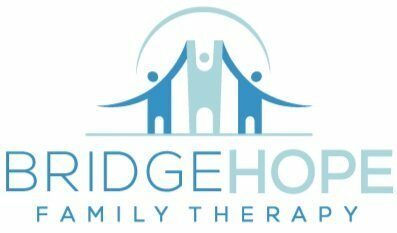Dealing with Adverse Childhood Experiences
Sadly, many young people go through adverse childhood experiences (ACES). While the specific form of ACEs can take on many different forms—ranging from abuse and neglect to household dysfunction, without protective factors, the result is usually the same – struggles with mental health, physical well-being, later life health problems, risky decision-making, and more, when risk factors prevail. When something is a risk factor, it elevates the chances of a negative outcome in a person’s life. These can take many forms, including economic hardships and genetic predispositions, but they are always seen as a concern that is going to make it more difficult for an individual to avoid negative outcomes. ACEs are one risk factor that can have profound effects, if not offset by protective factors.
What is Resilience?
Commonly in mainstream media, the educational system, or in conversation, the phrase, “children are resilient” will come up when a difficulty arises, and that is the end of it. However, acknowledging this is not enough. Resilience is the ability to bounce back from adversity. Further, resilience is created, and not an inherent trait. Those seeking to improve resilience in young people who have either experienced ACEs or other risk factors, and even for those who have not, can consider protective factors as part of the solution.
What Are Protective Factors?
A good way to think about protective factors is to imagine them balancing out the other side of the scale, on the opposite end from risk factors. Where risk factors can weigh one side down, protective factors can get on the other side and give the child a fighting chance to overcome their challenges. Protective factors can be found across families, friendships, and communities. While the term “protective factors” is used far less commonly in general conversation, these factors are no less important. The implications here for an individual are just the opposite as with a risk factor – these are positive components of a person’s life that can make it more likely they will be able to achieve desirable outcomes. For example, having a strong family life for support or having plenty of financial resources are protective factors.
What are Helpful Protective Factors?
It’s impossible to list everything that could potentially be considered a protective factor for a child, however, the list below highlights some common examples:

-
Supportive and healthy relationships. Young people who have experienced ACEs often have poor relationships with some of the people in their lives, but that doesn’t mean all of their relationships need to be a problem. For example, if a young person has a risk factor in the form of an abusive relationship with a parent, a protective factor could be created through solid relationships with mentors, caregivers, therapists, or other adults.
-
Safe environments. The two most important factors in a child’s environment is safety and consistency/predictability.
-
Emotional self-awareness. Children who are taught to be aware of their feelings, thoughts, and body sensations will fare well in challenging situations by being both aware of themselves and able to communicate their experiences.
-
Educational opportunities. A good education is a major protective factor for many young people. Education offers not only the opportunity for career growth and financial security but can also help with emotional growth and development.
-
Reliable coping strategies. Another useful protective factor is the ability to turn to healthy coping strategies, when necessary. These strategies can include being part of a sports team, club at school, or hobby. These strategies can doubly influence the child by having connection with others as well as with a safe and trusted adult. These strategies can also provide the ability for a child to openly and honestly express feelings to trusted people as well as engage in positive self-care activities.
Protective factors are a huge part of supporting well-being and overcoming the challenges presented by adverse childhood experiences. Anyone with influence over the life of a young person would be wise to work on building as many protective factors as possible, enabling that individual to become more resilient and take on whatever life has in store.
What if I didn’t have protective factors as a child and am experiencing the effects of trauma?
Unfortunately, not all children have access to protective factors and their ACEs may turn into trauma. Trauma, as noted in a previous post, can create challenges and impairments in functioning. Getting trauma treatment is an excellent way to resolve the wounds of the past. Here are some symptoms to look out for in when deciding when it is time to seek help:
-
Avoiding difficult people, places, or reminders of the trauma
-
Blaming yourself for what happened
-
Difficulty focusing on work or home responsibilities
-
Not being present – at work, at home, during sex, or other activities you enjoy
-
Avoiding close relationships or being vulnerable with others
-
Feeling irritable at everyone or everything
-
Thoughts of suicide
-
Feeling tired all the time
-
Feeling hyperaware
-
Thinking “what’s the next thing that’s going to happen?”
-
Difficulty trusting others (i.e., colleagues, extended family)
-
Wondering if you or your children will be safe going somewhere
Online EMDR therapist Texas
Dr. Bradford Stucki, LMFT, a clinician at BridgeHope Family Therapy has the skills and expertise to help you with the challenges you face from your trauma. You can expect to receive empathy and experience a safe environment as you walk on your path to changing your experiences with trauma. Online therapy is available to residents of Texas.
Reach out to start your journey to resolving your trauma today




